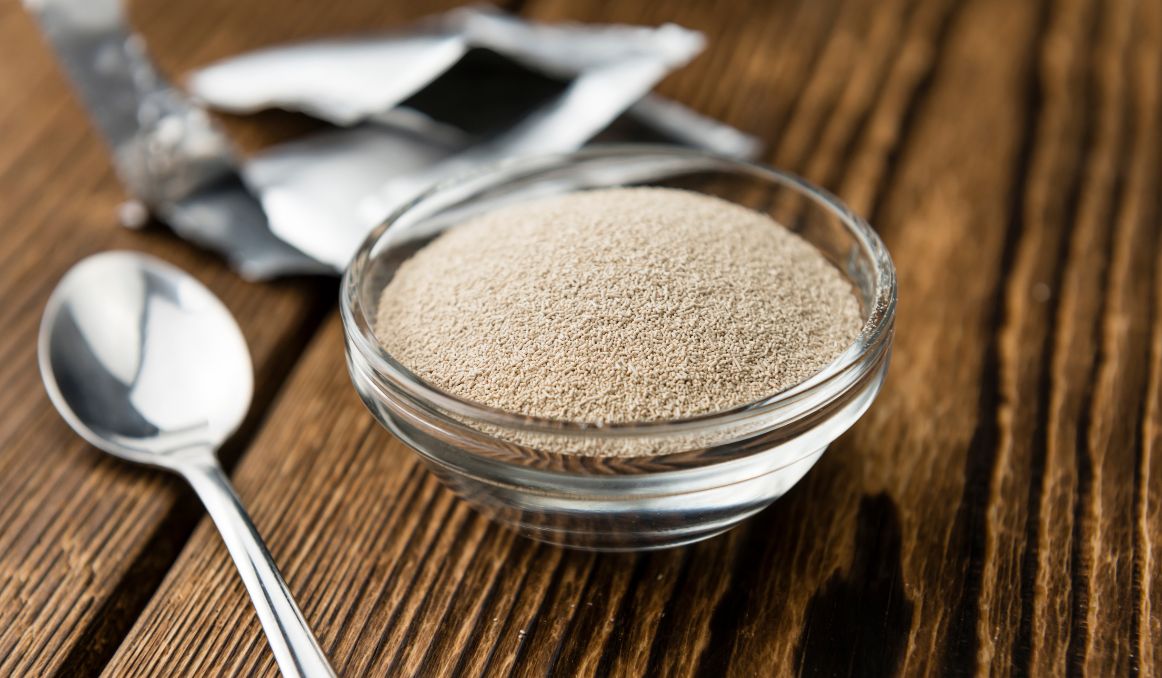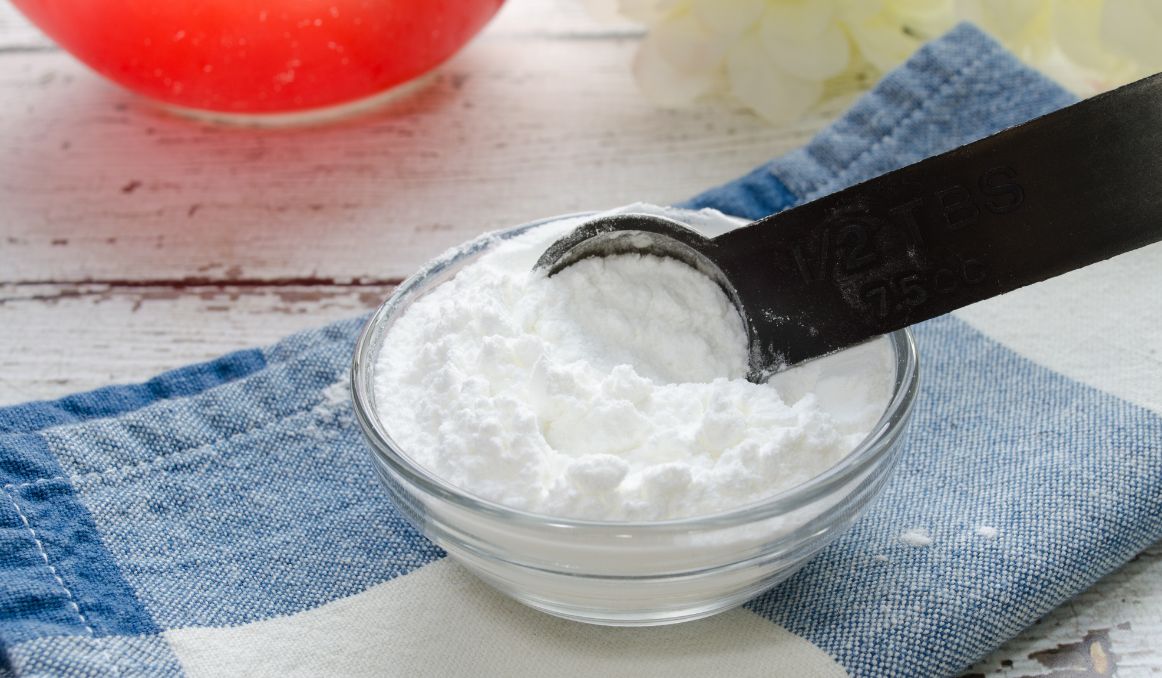What Can You Substitute for Yeast When Baking?
It is so often said that yeast is virtually irreplaceable, that a question like “what can you substitute for yeast when baking?” seems crazy.
Nothing, of course!
But that’s not actually true.
Yeast is irreplaceable, in some respects.
But when it comes to baking, we’re in a whole new arena.
Yeast

Yeast has long been known for its powerful role in baking and fermenting, to the point that it seems like a god among food ingredients.
And to think, it got its start as a meager little fungus.
It’s true. Yeast is one of the oldest living organisms on earth. It has been around for millions of years, and, as far as we know, it has always had a single function: to find sugar, consume it, and convert that sugar to ethanol (alcohol) and carbon dioxide.
It does its job very well, and it is virtually unstoppable. As a single celled, eukaryotic life form, yeast can reproduce on its own or sexually, aerobically or anaerobically, and it exists on pretty much every surface and in the air all around us.
Its biggest enemy is heat.
While yeast will stagnate and lie dormant in temperatures that are too cold, it will die in extreme heat.
Yeast begins to die off at temperatures of 120 degrees Fahrenheit.
Yeast in Food
Interestingly, yeast was discovered by humans, for our food, accidentally, and even once we discovered it and utilized it, we did not really know what we were doing.
Wine has been a staple of civilizations pretty much since early mankind, and perhaps even before that.
Anthropologists have shown us that monkeys can make their own wine.
So even animals are getting in on the yeast game.
You see, once the sugar in fruit is exposed, yeast can get to work fermenting those juices into alcohol.
This is how we get wine: crushed grapes left out in the open air attract yeast, the yeast gets into that sugary must, and then it converts all those sugars to alcohol and carbon dioxide.
This is also how we get cider; simply replace grapes with apples or pears.
There are several other fermented juice drinks across civilizations that have this same process.
Beer was a bit more complicated because the grains in beer are not as sugary.
Archeologists think beer, along with bread, were happy accidents.
Most likely, a woman was out collecting her barley for her family, and for whatever reason left the basket out to get rained on for several days.
The small amounts of natural sugars hidden in the starches would have attracted the yeast in the environment, and the woman would have come back to find soggy grain covered in fizzing water.
Of course, she would have wanted to salvage what she could from her basket; we’re talking about hard living thousands of years ago.
Knowing the water was fresh rainwater, and that the grain could be kneaded into dough for bread, she would have served the now grainy water to her family and put the dough in the oven.
To her great surprise and delight, the grainy water, an early form of ale, would have given her family a slightly euphoric effect, and the bread would have risen to a lighter, fluffier version that the unleavened bread she was used to.
Thanks, yeast!
From that point on, brewers and bakers learned to leave their products out to attract the yeast that converts wort (grain water) to ale and unleavened bread to the leavened stuff.
Over time, they also learned that roasted grains attracted even more yeast, and allowed for a higher alcohol content.
No Fermentation without Yeast
So, the reason many people will tell you there is no substitute for yeast is that you cannot make alcohol without yeast. It simply is not possible. The only ingredient on earth that will make alcohol is yeast.
But you don’t need alcohol to make bread.
You see, the alcohol that is produced when the yeast converts the sugars in bread dough is baked off in the heat. Remember yeast dies at temperatures higher than 120 degrees F?
Well, alcohol evaporates at temperatures higher than 172 degrees F.
So, once you put that bread in the oven, the alcohol is almost completely baked out.
What you absolutely need is the carbon dioxide for the bread to rise, and that can be done with other agents.
What Can You Substitute for Yeast When Baking?

Three primary ingredients exist that will make your bread or other baked goods rise and be lighter and fluffier without yeast.
Do keep in mind, however, that nothing will fully replace yeast, so if you are dealing with a bread that you want super light and fluffy, you will need to find some yeast.
But in a pinch, you can use one of the following three replacements:
Baking Powder
Baking powder is a natural rising agent, as it is a sodium bicarbonate and an acid, basically it is baking soda and cream of tartar.
You can use an equal amount of baking powder to yeast as a substitute.
Baking Soda and Acid
Baking soda is only sodium bicarbonate, so it needs an acid like cream of tartar to be a rising agent.
You can substitute half baking soda and half acid for one part yeast.
So, if your recipe calls for one teaspoon of yeast, you would use ½ teaspoon of baking soda and ½ teaspoon of acid.
Your acids can be anything from cream of tartar to vinegar to lemon juice.
Egg Whites
Egg whites, when whisked or beaten vigorously for several minutes will create air pockets that help baked good rise.
You can substitute 2 egg whites per teaspoon of yeast.
In the end, you really can’t replace yeast for all of its wonderful contributions to fermented foods and beverages, but fortunately, when it comes to baked goods, you can at least reach for some help in a pinch.
Cheers!
Passionate about yeast fermentation and all the wonders it can do? So are we! If you’re interested in finding out how you can use our technology to control fermentation and monitor your yeast, save work hours and improve the cost-efficiency of your business, drop us a line at [email protected]
Also, check out these product pages, if you’re into beer or wine making:
- Oculyze BB 2.0 (Better Brewing) Yeast Cell Counter App + Hardware
- Oculyze FW (Fermentation Wine) Yeast Cell Counter App + Hardware
…or our custom solution page for other use cases (yours included):
Sources:


